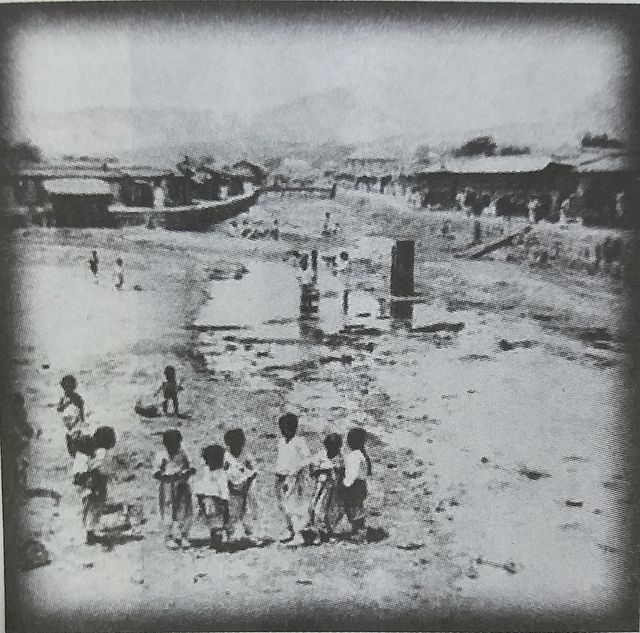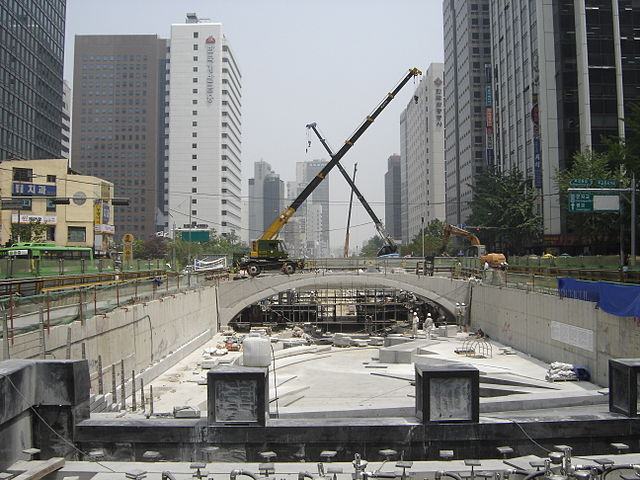Cheonggyecheon is a 10.9-kilometre-long (6.8 mi) stream and public space in downtown Seoul, South Korea. A natural stream sourced from the Suseongdong Valley in Inwangsan, it was historically maintained as part of Seoul's early sewerage until the mid-20th century, when post-Korean War rapid economic development and deteriorating conditions prompted the filling of the stream with concrete and the construction of an elevated freeway, the Cheonggye Expressway, in its place. In 2003, the city government began an urban renewal project to disassemble the expressway and restore the stream, which was completed in 2005 at a cost of over ₩386 billion.
Cheonggyecheon in 2012
Cheonggyecheon in 1904
Cheonggyecheon under restoration in 2005
Shortly after reopening in 2005.
The Downtown Seoul, also known as Seoul Central Business District or Sadaemun-An is traditional city center and central business district of Seoul, located through Gwanghwamun of Jongno District and Seoul Station of Jung District along the Sejong-daero and Jong-ro. For its time-honored and unique geographic status in Seoul, the Downtown is usually just called as 'The Central Business District ', or sometimes as 'Gwanghwamun Business District' for outstanding landmark 'Gwanghwamun' at the heart of it.
Picture of Downtown Seoul taken from Inwangsan, 2015
In 1928, local government of Keijō designated frontyard of City Hall as its geographic city center (都心), where is nowadays Seoul Plaza.
Built 1977 in front of the Seoul Station, Daewoo Group's Headquarter building is a landmark symbolizing 1970s of South Korea's rapid growth. It is nowadays named as 'Seoul Square'.
Restored in 2004, walled by high-rise office buildings on both side, standing as a eco-friendly linear park of stream between Jongno District and Jung District, the Cheonggyecheon is a soul of 21th century Downtown Seoul.








